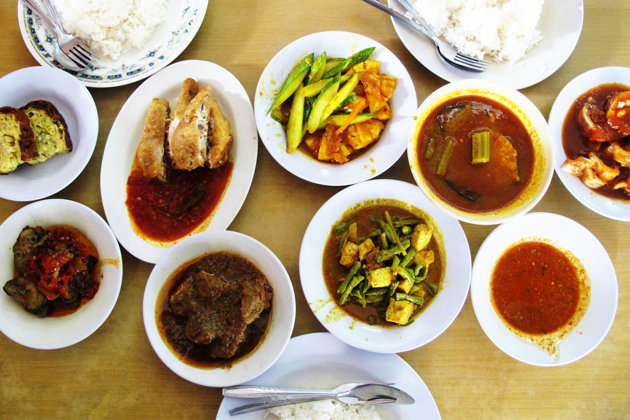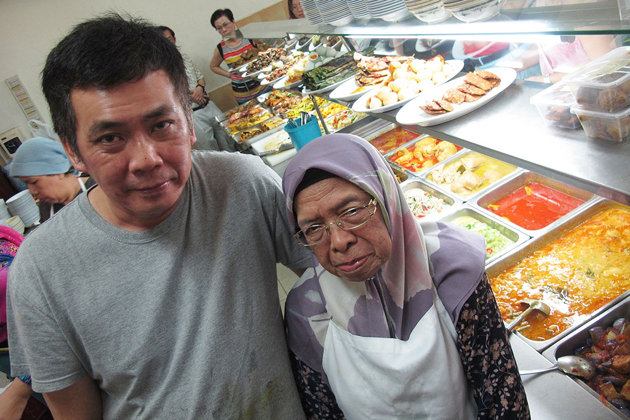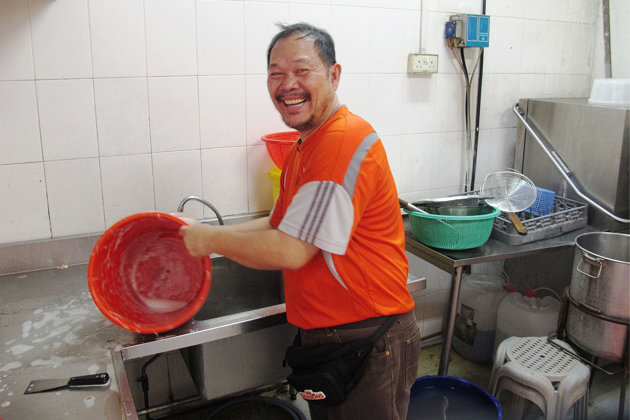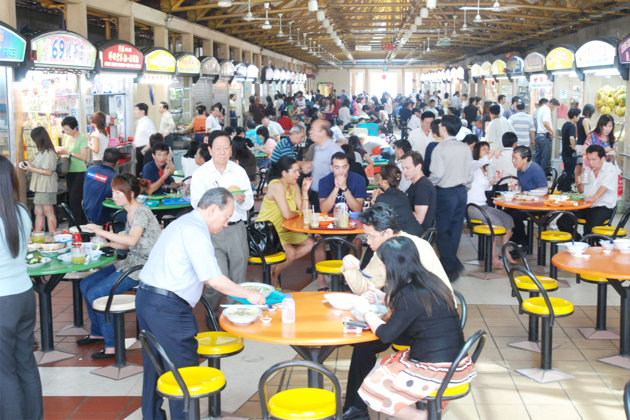
Nasi Padang in World’s Costliest City
By KF Seetoh - Wednesday, Mar 12, 2014

I doubt many are proud of the title – that we’ve become the world’s most expensive city. But I also sense some are secretly proud of it. The government has come out in defence – that it’s based on foreigner and expatriate views and prices, not indicative of actual living expenses of the regular Singapore Chans and Tans. But it is also not good news that it’s so expensive for our foreign talents in our midst and Singaporeans also pay the same prices of cars and houses they help drive up too.
But, a silver lining – while cost of housing and business cost are rising (rentals and salaries), we can still get a great makan session with just $4 in your pocket. Think nasi lemak and kopi-o. But the realities are harsh and are pressing on that comforting fact – low end comfort food prices are set to rise if this reality is left to fester. For starters, not many are taking up new local hawker food stall licenses, where it’s regarded as the cheapest form of food entrepreneurism here. Bids for hawker centre stalls have gone from as low as $21 to a high of about $3,000 in prime areas, yet, whether in town or in the outskirt boondocks, a chicken rice meal can be had for $3-$4.

The pressure on this is real and the situation is fragile. Manpower is lacking and cleaners are missing or in short supply, yet there is a push for a gradual wage increase for these blue collar workers. As a hirer of such staff, I practice and fully agree to higher wages for them, but the reality is that availability is low and hardly any serious takers. Two scenarios can happen; street food business owners are forced to pay a lot more for such workers and demand for their cheap comfort food will rise, as supply dwindles. With a projected 6.9 million population set over the next decade or so, at least 150,000 new hungry stomachs will hit this shore each year and the demand of cheaper comfort food will rise. Also, new entrants into the street food business here, is waning and trickling to perhaps, a gradual stop.
The facts are written on the wall, as Makansutra builds its new food centre in Sentosa – the tenants can come only and when they close another under-performing outlet or if they can find workers to help out. They cannot expand, even if they have the financial muscle to, for a host of reasons, key of which are mentioned above. Unless they are truly seeking the professional road less travelled, post- independence baby boomers and their kids do not have street food business in their career radar.

A famous nasi padang stall in town, with over 50 years in the business and is a favourite of former Malaysian prime minister Mahathir Mohamad, called to say “we will be closing by end of this month, our rents are going up by 3 times” and boss Zulfa Hamid adds, “ the landlord told us – we can terminate the lease early”. The River Valley Nasi Padang at Zion Road is already paying five-figure rentals. Most in his team are nearing retirement age and are not keen on a new move so the owner is in a quandary – move to another convenient spot with equally high rents, hence charge more and work with new inexperienced staff, or stay out of the food shop business and run a hawker stall. He will lose all their well-heeled customers who may not visit hawker centres for his food. Many claim their prices are north of the usual, but that’s because the ingredients used (like chilled tenderloin for rendang) and quality of food, is north of the usual too. This rent-hike-and-go scenario is played out across many food shops in our city.

One suggestion I have is that the government (it always starts and ends with them) consider fixed low rents for their public coffeeshops and public food shop spaces. Market forces should not interfere. Eateries with a good track record can bid for them and capped at a certain price range – they can take the main stall and sublet a few. We don’t need too many humdrum coffeeshops as the competition is killing them, plus, there are not many new takers in the business. Also, they should think about implementing caps for rent hikes (which was the reason why rent control was implemented decades ago and lifted in the 2000s), so there is a mutually agreeable format and percentage in increases as contracts are renewed. This should be based on a set of performances and promises. Currently, there is a free-fall approach to rent hikes. These are some moves that can help stem this wave of high operation and professional costs, which can give rise to the eventual and inevitable basic $10 chicken rice meals at food courts in the near future.

If this great food culture of ours and skills of the culinary artisans in our midst are worth preserving, then something ought to be done… now.


